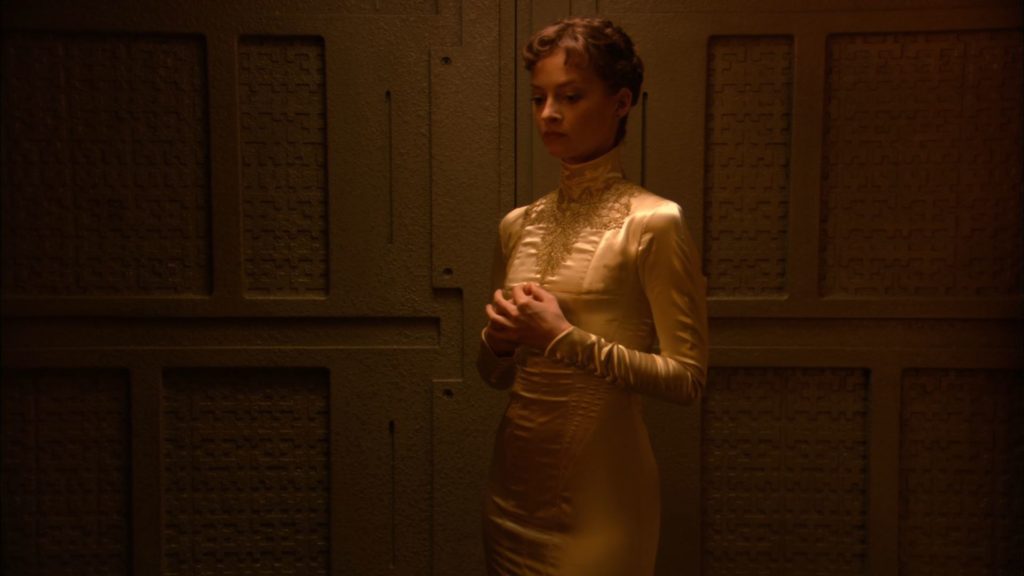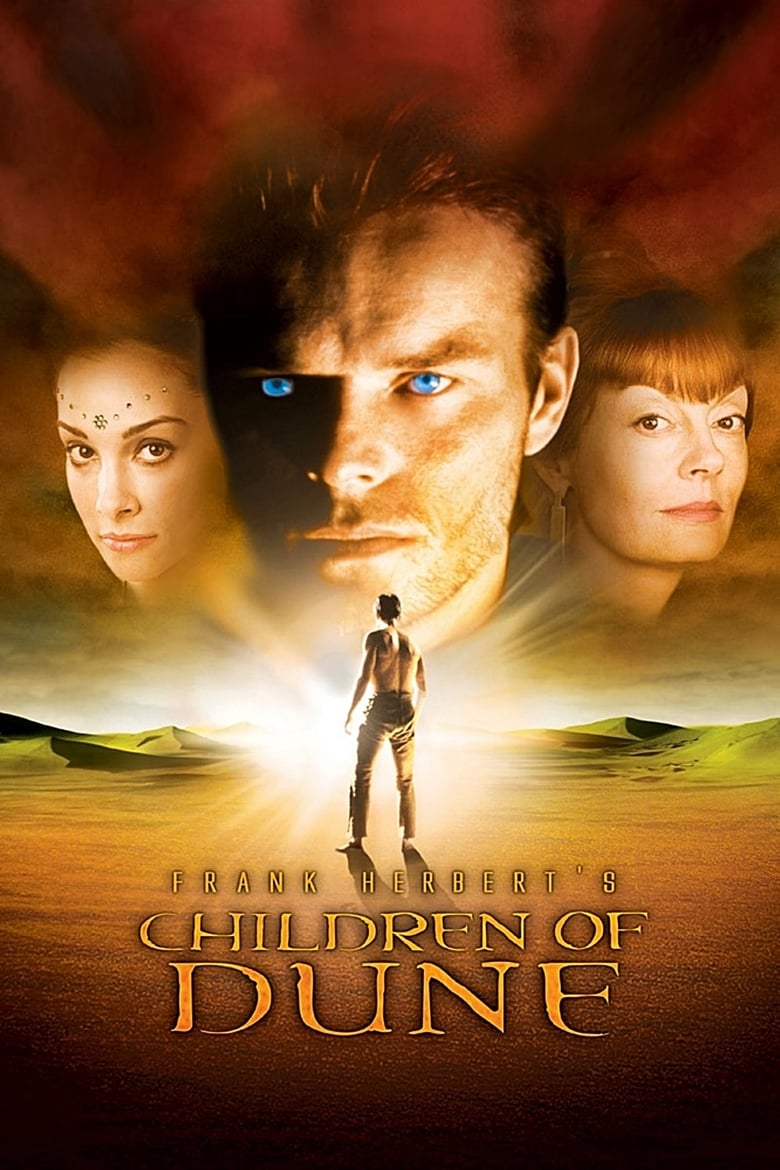
“The Fremen were supreme in that quality the ancients called “spannungsbogen”–which is the self-imposed delay between desire for a thing and the act of reaching out to grasp that thing.”
– from “The Wisdom of Muad’Dib” by the Princess Irulan
After the success of the miniseries Frank Herbert’s Dune director John Harrison next adapted the two sequel novels: Dune Messiah and Children of Dune. The miniseries is as such officially known as Frank Herbert’s Children of Dune. The cast and format remained the same where possible, but the increase in budget reflected in better visuals. In addition the wardrobe was more subdued and gone are the silly hats and hairstyles. The miniseries spans three parts each just under 90 minutes in length. As with the 2000 miniseries these are faithful adaptations of Dune Messiah and Children of Dune, only deviating or the purpose of clarity.
Dune Messiah
The three part miniseries starts off with Dune Messiah – which forms the first part. It is based on the eponymous novel first published in 1969. Dune Messiah can be a confusing book to read and understand. It is the shortest of the Dune novels – at just 256 pages. It was originally published as a serial in Galaxy magazine. In the novel, as well as in the series, Paul is actively undermining his own legacy. He has been emperor for 12 years, but despite his power he cannot do anything about the Jihad that has been unleashed on the Known Universe. 61 billion people have died at the hands of his Fremen warriors and the multitude of religious zealots that joined them.

The troubled Paul has foreseen the death of his concubine Chani during childbirth. His prescience thoughts have become an impossible burden. He does not want to be the father figure of humanity. The thousands of years of solitude that will require subjecting humanity to an enforced period of tranquility repulses him. His enemies: the Tleilaxu, the Bene Gesserit and the Spacing Build sense this weakness and actively plot against Paul.
Similar but better?
The broad strokes between the novel and the series adaptation are the same. The conspiracy against Paul follows roughly the same pattern and the characters perform the same actions. Yet I think the series is easier to understand. Dune Messiah is a densely written story – perhaps due to its serialized format. Every page contains subtleties. Character actions and thoughts need to be read carefully to be understood. Reading through Dune Messiah the first time allowed me to understand the general aspects of the story, but I felt irritation at the apparent contradictions of Paul’s desire to undo his own reign. I had a hard time not viewing Paul as the hero of the story. After consulting an online resource it became apparent I missed the deeper themes author Frank Herbert intended. A second readthrough made me see the contradictions were instead consequences of the original Dune novel.
New casting
With the adaptation of Dune Messiah as one episode lasting just under 90 minutes the story has been distilled to make it easier to understand. If you are a novice to the novels you will find this miniseries a great help. Alec Newman once again portrays Paul, and is generally considered to be more effective this time. Julie Cox returns as Princess Irulan Corrino, now scheming to undermine Paul. Other roles were recast: Steven Berkoff plays Stilgar and Alice Krige plays Lady Jessica after Saskia Reeves could not return due to pregnancy.
Viewers will also notice that some of the actors from the Dune miniseries return in different roles. Actor Karel Dobry plays Liet-Kynes in the first series and now the Fremen fanatic turned traitor Korba in this miniseries. The song at the end of the first part is Inama Nushif. It is song by Azam Ali. The lyrics are by composer Brian Tyler from the Dune Encyclopedia.
Children of Dune
In the follow-up novel Children of Dune it is Paul’s twins who take on the mantle. His son Leto II in particular is up to the challenge of guiding humanity down its Golden Path – something the enemies of the Atreides actively try to prevent. In many ways the story harkens back to the first Dune novel by showing the complicated machinations surrounding the quest to dominate spice production. The series succeeds in showing this, however at the cost of being confusing at times. What I don’t like are the dreams / visions Alia and Leto II have. I understand that Leto II has decided to follow-up the Golden Path his father dared not but it does not clearly state this.
Children of Dune is special as a story because it acts as a capstone to the first novel. Paul finally dies and many characters complete their transformation. Stilgar becomes a sceptic of fanaticism and Irulan proves herself to be Altruistic. Most viewers will remember the series for starting the career of James McAvoy. Sadly, others did not benefit. Jessica Brooks who plays Ghanima all but disappeared 10 years ago, as did Julie Cox. All in all this miniseries is a step up from the first. The better costumes and more faithful adaptation of the story ensures Dune fans have a lot to like.
Different version of Children of Dune
Like the first series Children of Dune has a myriad of different versions, but not to take into account sexual content. There is a short cut version of the series with a 182 minute running time, but that was just aired in 2004. Even the DVD release since has a nominal time of 250 minutes. There is mention of a 266 minute release just for the US, but I have not been able to find out what additional content is included.
Originally there had been plans to continue the series. God-Emperor of Dune would have been next, it is in fact my favorite. However, I already consider us lucky with Children of Dune. Even at the time I thought God-Emperor of Dune would be too cerebral for most of the audience to understand.


